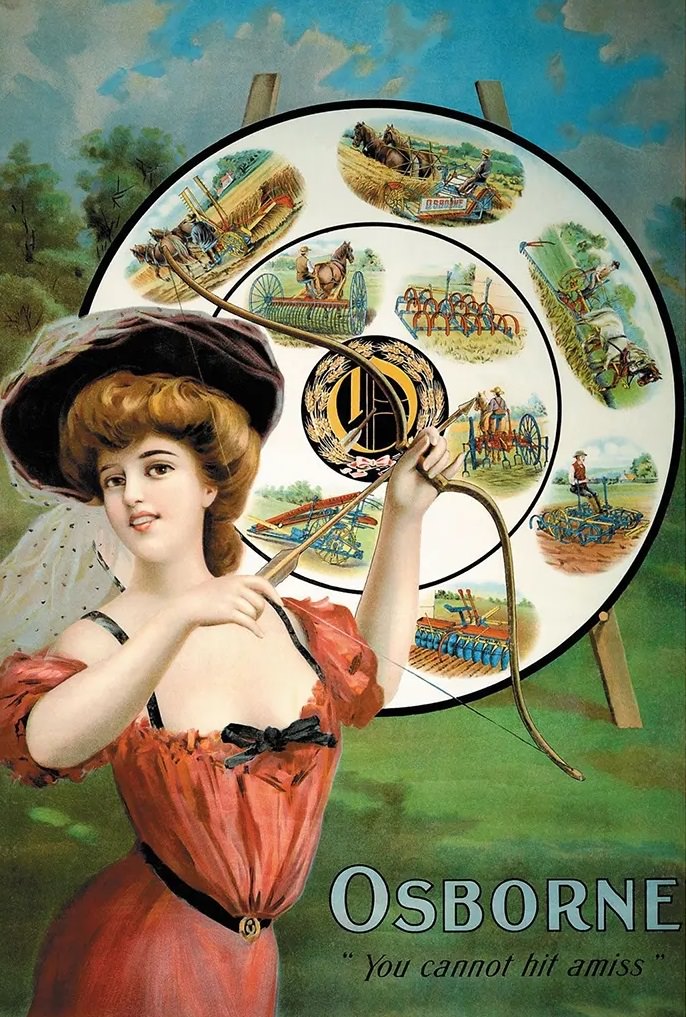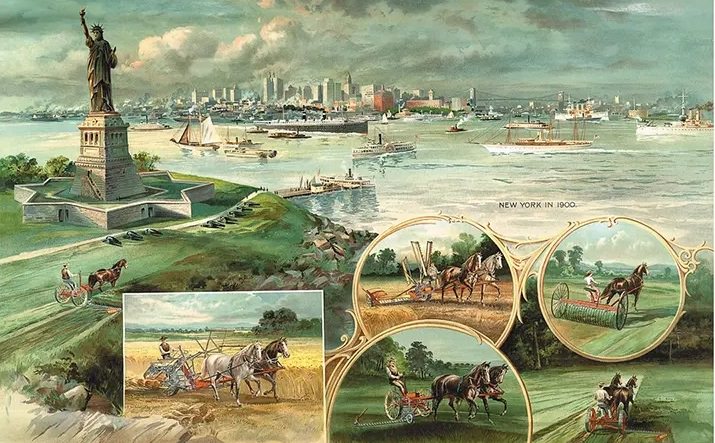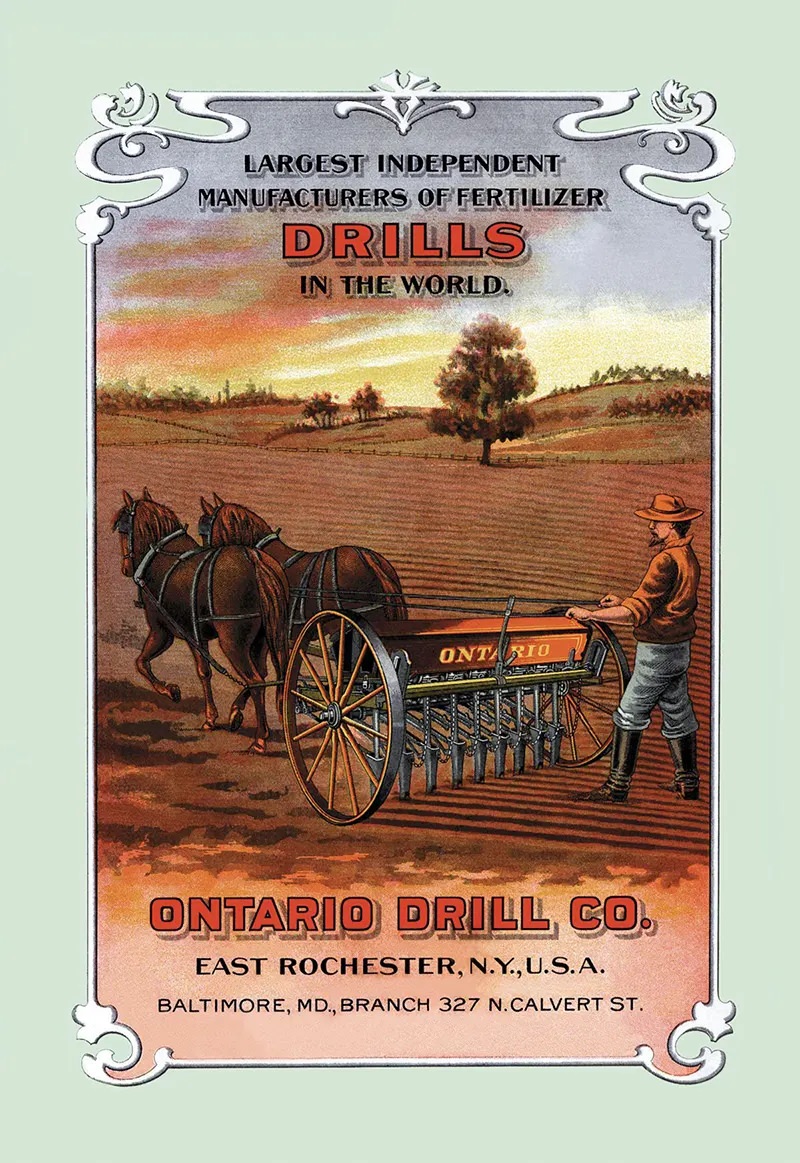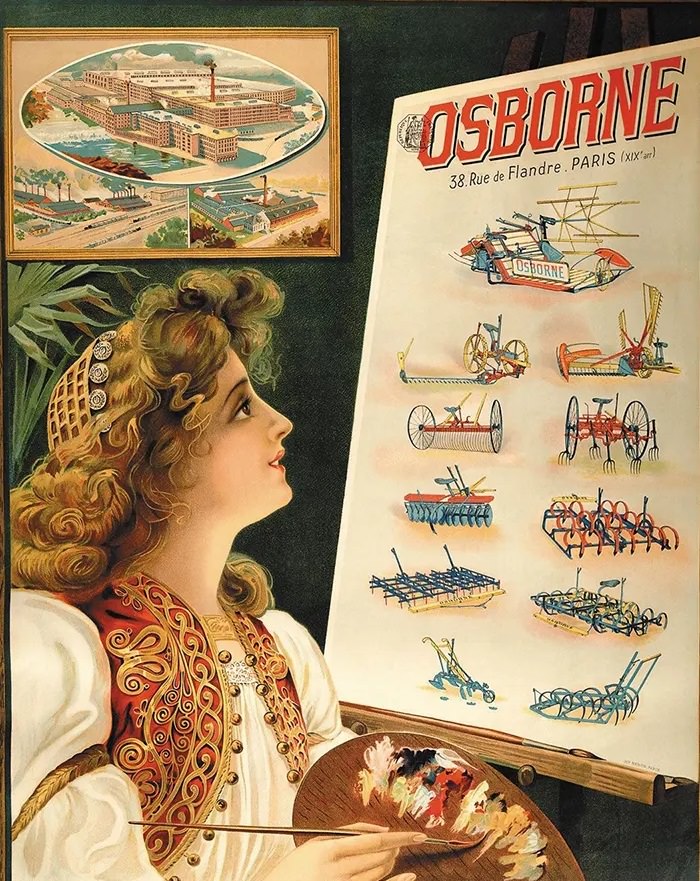Farms became food factories with new machinery and fertilizers in the late 19th and early 20th centuries. Rural entrepreneurs were eager to get their brands in front of these new rural customers looking for products to increase their output. Hence the proliferation of farm signs and advertisements. Farm and agricultural signs ranged from tasteful or humorous notices printed on lithographed paper to bold statements embossed in tin and porcelain enamel. Monarch Poultry Feeds used a wooden rooster cutout to advertise their poultry feed, while American Stock Food used Uncle Sam.
The history of fertilizer has contributed greatly to defining political, economic, and social circumstances. After chemically synthesized fertilizers were developed, environmental conditions were drastically altered. Ancient Egyptians, Romans, Babylonians, and early Germans used minerals and manure to enhance the productivity of their farms. Wood ash became a widely used field treatment. Fish was used as fertilizer at least as early as 1620. During the 19th century, large quantities of guano were exported from Peru and Chile to Europe and the United States (and later from Namibia and other areas). Guano had been used in the Andes for at least 1500 years. During the early seventeenth century, fertilizer technology was systematically researched. Researchers like Francis Bacon and Johann Glauber describe the beneficial effects of saltpeter on the soil.
In 1868, Glauber developed the first complete mineral fertilizer containing saltpeter, lime, phosphoric acid, nitrogen, and potash. The development of scientific chemical theories led to the discovery of the chemical needs of plants, thereby improving fertilizer composition. The organic chemist Justus von Liebig demonstrated that plants require nitrogen and phosphorus to grow. In the early 1900s, Sir John Lawes received a patent for producing effective fertilizers using a form of phosphate.
In 1901, Dan Albone developed the first gasoline-powered general-purpose tractor, and in 1923, the International Harvester Farmall tractor marked the advent of heavy machinery replacing draft animals (especially horses). Since then, agriculture has been further revolutionized by the development of self-propelled mechanical harvesters (combines), planters, transplanters, and other equipment. The inventions made farming tasks faster and more efficient, allowing modern farms to produce much greater quantities of high-quality produce per acre. Using the Haber-Bosch method to synthesize ammonium nitrate represented a breakthrough in crop yields. Fritz Haber was the first to patent it. Carl Bosch commercialized the process and secured further patents in 1910 while working for German chemical company BASF. Following World War II, synthetic fertilizer use increased rapidly as the world’s population increased.




























